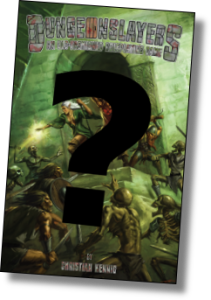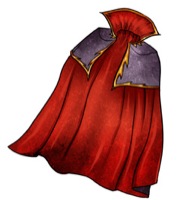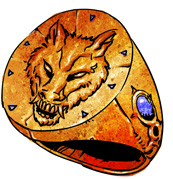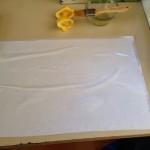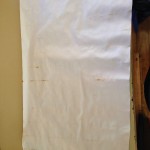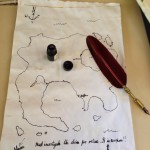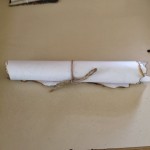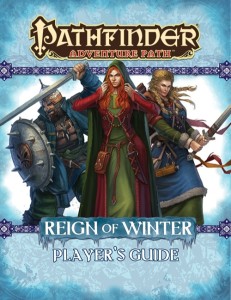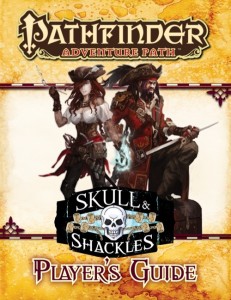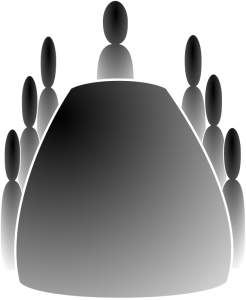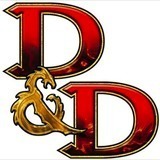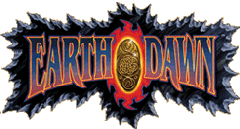 Most of us are familiar with the most famous fantasy games out there. Dungeons and Dragons, Pathfinder, Warhammer Fantasy perhaps Dungeon World now, even Tunnels and Trolls! When I speak about Earthdawn though I get a lot of blanks. Some people have heard of it but know nothing about it and very rarely someone who has played it. Today I feel a little unusual writing about Earthdawn as officially at this point in time there is no active version of the system although all of the books are available at various sites.
Most of us are familiar with the most famous fantasy games out there. Dungeons and Dragons, Pathfinder, Warhammer Fantasy perhaps Dungeon World now, even Tunnels and Trolls! When I speak about Earthdawn though I get a lot of blanks. Some people have heard of it but know nothing about it and very rarely someone who has played it. Today I feel a little unusual writing about Earthdawn as officially at this point in time there is no active version of the system although all of the books are available at various sites.
Earthdawn is without a shadow of a doubt my most beloved fantasy game of all time. It is my kind of system. It is rich in story. It’s mechanics are intricate and woven into the pattern of the whole system. On the same scale, Earthdawn is not a game for everyone. It is intricate, involving a lot of different powers and one of the most original spellcasting systems I have ever seen. Also, the way that the magical item system works is phenomenal.
Let me explain a little more clearly. Earthdawn is all about story. It is an age of magic and legend where players forge the stories that will be spoken about as myths in aeons to come. It is also a world of magic where everything that the heroes do is powered by magic. The simple swing of a blade is powered and guided by the players magical abilities making them more than they could ever hope to be otherwise. In Earthdawn everything, including the characters name, is all about the story.
Earthdawn is FASA’s system that was released in the 90’s after the release of Shadowrun. It is linked to Shadowrun in meta-plot although I never really cared much for following those details. Being that it is linked to Shadowrun and Shadowrun occurs on Earth… Earthdawn is set on Earth! The map to the game translates to areas in and around the mediterranean and the middle east. It works on the same presumption as Shadowrun where there is a natural cycle of magic. Earthdawn occurs in the waning point (after the peak) where magic is leaving the world while Shadowrun works in the waxing phase (magic on the increase). Earthdawn is a much more magically orientated world that has been ravaged by beings that were allowed to cross into our world when the magic reached a certain point. They are horrible creatures bent only on destruction and pain and in the game they are known as Horrors.
Earthdawn is dark fantasy, possibly even horror fantasy depending on how you play it (I love horror fantasy games). The setting is made after much of civilisation sealed themselves underground (there are some exceptions to this) in magically protected cities called Kaers. They did this to escape the predicted coming of the Horrors who travelled through Astral Space to ravage and torment the lands. In the 500 years that the societies lived underground many were breached after they sealed their doors, but even more than that, many were infiltrated before they sealed their doors. All that were breached or infiltrated suffered horrors beyond mention and perished while they were locked away.
Each Kaer was given a magic “meter” of sorts that measured the magic levels in the world. They were advised by the magicians of Thera at what point on the meter that the Horrors would no longer be able to exist and to open their doors and emerge then. But unpredicted the magic meter stopped receding for some time and remained level just above the mark. The first Kaer to open sent explorers out into the worlds to see if the Horrors had left. They travelled out in the air ship Earthdawn but failed to return. At the same time, slowly around the world other Kaers began to open and explore their surroundings. Horrors still existed but they were mainly the lesser Horrors and there were fewer reports of encounters with the Named Horrors that were like eternal nightmares on the collective soul of the land.
The lands of Barsaive collected together under the leadership of the Dwarven Kingdom of Throal to reject the teachings and control of the Empire of Thera who believe in slavery for non-Therans. If you are born in one of the provinces you are treated as a barbarian, or a non-Theran and therefore eligible for slavery. Throal and the free cities rejected Thera when they finally arrived in the province to reclaim their lands and there has been a tense standoff ever since.
There are numerous disciplines (same as classes in Pathfinder) that the players can take on and the races are pretty much the same as in other games but also include Windlings (think pixies), Trolls (think large scottish orks!) and T’skrang (Largely lizards that love the river life). Spell wielding magicians fit into the disciplines of elementalist, illusionist, nethermancer and wizard. The more martial disciplines fall under beastmaster, cavalryman, sword master, warrior, sky raider, archer and horror stalker. Finally the more utility like classes fall under air sailor, scout, thief, troubadour and weaponsmith. There are a number of other disciplines that are largely race specific but these are the core of the classes. A discipline is a magical calling in which the individual is taught how to manipulate the patterns of magical energy around them to empower their own Talents. Talents are thematically aligned powers that you use extensively when your character considers their action. As of third edition of the game you get a number of talents per circle (think levels in Pathfinder) that allow you to broaden your abilities from previous circles. You put ranks into those powers to become better at them.
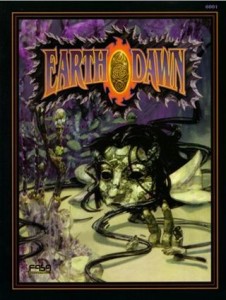 The more traditional magic system i.e. spells from a spellcasting class are handled quite differently from any other system I have come across. To cast a spell safely (their are ways to cast in an unsafe manner that may attract Horror attention) is usually a multiple turn proposition. To cast the spell the magician must first weave threads into magical patterns in astral space called matrixes and then after all threads are woven and the spell is ready to be cast the magician channels magic through the matrix to cast the spell. The magician can attune as many spells as they have matrixes at one time but to change a matrix to another spell either takes time or great skill. The threads that are woven into the spell prior to its casting are used up in the casting so that if they want to cast the spell again they must re-weave the threads. It sounds complicated, and in comparison to other systems it is, but it fits beautifully with the theme in game that all magic is made up of patterns.
The more traditional magic system i.e. spells from a spellcasting class are handled quite differently from any other system I have come across. To cast a spell safely (their are ways to cast in an unsafe manner that may attract Horror attention) is usually a multiple turn proposition. To cast the spell the magician must first weave threads into magical patterns in astral space called matrixes and then after all threads are woven and the spell is ready to be cast the magician channels magic through the matrix to cast the spell. The magician can attune as many spells as they have matrixes at one time but to change a matrix to another spell either takes time or great skill. The threads that are woven into the spell prior to its casting are used up in the casting so that if they want to cast the spell again they must re-weave the threads. It sounds complicated, and in comparison to other systems it is, but it fits beautifully with the theme in game that all magic is made up of patterns.
Magical items are a thing of beauty in this game. They are at the heart and soul of the mechanic supports the story driven nature of this system. You may find big piles of loot with magical equipment amongst it BUT you will never be able to pick up an item of power and immediately use it like you can in other games. magic items in Earthdawn have a history and have information about them that must be learnt before they can be empowered. Also, magic items generally have different levels of power that you can upgrade the item to. You may need to research another key knowledge of the item or perform a deed with the item before the power can be woven to. Essentially every class gets access to the ability to weave threads. For magicians this happens at first circle and for other classes it generally happens around fourth circle. This ability allows the character to power a magical item by attaching a thread from their own pattern to the magical item and thus being able to gain the benefit from it. This again probably sounds complicated but believe me, it is a beautiful story telling option. To power an item the character must pursue the knowledge to do so.
For example, amongst a Horror’s stash a Warrior picks up a rusty broadsword (every Earthdawn player is suddenly salivating for good reason) and throws it aside. The Weaponsmith picks up the blade and attunes his sight to astral seeing that it contains a more complex pattern than a normal rusting blade. He spends some time with the blade over the next couple of days examining its pattern as they travel and then hands it back to the Warrior. “Friend, this blade has a history and hidden power. I do not know the answers to these questions but you must find the name of the forger of this blade to unlock its secrets.” See how fantastic that idea is to a game and how story driven this mechanic is. It truly inspires legends.
The other thing about Earthdawn stems from the sourcebooks themselves. Sourcebooks normally are filled with pages and pages of information about new rules with a little bit of game information. That concept is truly turned on its head with most sourcebooks. Each sourcebook is filled with world and story information. New rules are largely stored in a chapter at the end of the books linking back to the information contained in the stories. They are mostly beautifully laid out books and all of the sourcebooks back to first edition can still be used. Some of the second and third edition material largely reprint some of the first edition stuff and add to it as it is a game that supports an overarching meta-plot that is played out through this information. If you want to look at what is on offer, here is a link to DriveThruRPG that lists most of what has been printed in the setting so far.
Well, you may well be wondering why I am banging on about a system that is currently not in print. Let me tell you that I have an inkling that now FASA have reformed and that the licence of Earthdawn has lapsed from the companies that were working on it we may just see a new resurgence in Earthdawn material. I am very excited about this possibility and so I want to open some new players eyes to the beauty of Earthdawn. It is not a traditional hack and slash game. It is an intricate system that is carefully measured for the effect it provides but can be a bit daunting at the start.
I have spoken to some that have played the Savage Worlds variant that made it to the table but none that did the Pathfinder version. I still think that the original system (plus the 3rd edition variations) are the best to play the game in. A lot of people level criticisms at this system saying it was made just to appeal to the polyhedron crowd (the game utilises all seven dice in the original version, five in the third edition) but I believe this to be untrue. Looking at the system with my years of experience of reading and playing it I have a respect for how they use the system to support the tenets of the game. What I would love you to do is take a look at the system and find someone to give it a go. It is an incredibly rewarding experience. If you want, I would recommend the Shattered Pattern module as a game. Grab the system, build up some characters to that level then play that adventure. It has a bit of everything it is to play Earthdawn all in one place. Let me know what your thoughts are in the comments and until next time, keep rolling!
Mark Knights is 39 year old guy living in a small rural town called Elliott in Tasmania, Australia. I have been role playing since I was 11 years old playing the original versions of Dungeons and Dragons, MERP, Elric, Dragon Warriors and the like amongst other genre games. I played D&D 2nd Edition through the 90′s but I ran Earthdawn for my fantasy setting and loved it as a GM. When 3rd Edition came out for D&D I tried it but found it too heavy on rules. I ignored the 3.5 edition of DnD in favour of Earthdawn (big mistake) as I thought it was just a money spinner. When 4th Edition DnD came on my players and I gave it a red hot go but hated what it had dumbed the game down to be. On a trip to Melbourne to buy some 4E stuff from a hobby store an old mate of mine pointed me at Pathfinder and in a Fantasy setting I have never looked back.
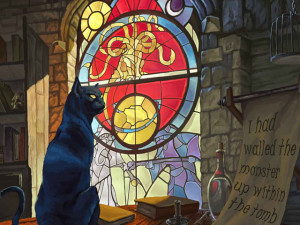 This news has circulated a bit in a couple of my social media circles, but I wanted to boost the signal a little more. Frog God Games plans to make the PDF of Swords & Wizardry Complete free for everyone (not just backers) if their current Kickstarter hits 400 backers. I think this is a pretty awesome way to help get S&W out there in the hands of some more folks and a some additional incentive to back their current Kickstarter.
This news has circulated a bit in a couple of my social media circles, but I wanted to boost the signal a little more. Frog God Games plans to make the PDF of Swords & Wizardry Complete free for everyone (not just backers) if their current Kickstarter hits 400 backers. I think this is a pretty awesome way to help get S&W out there in the hands of some more folks and a some additional incentive to back their current Kickstarter.
